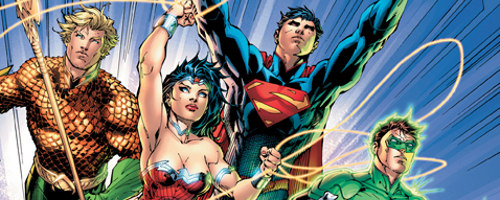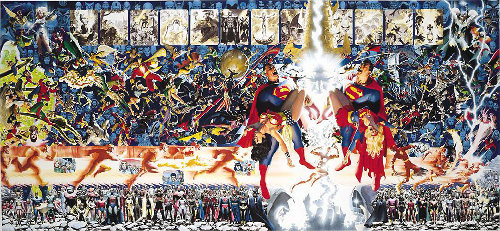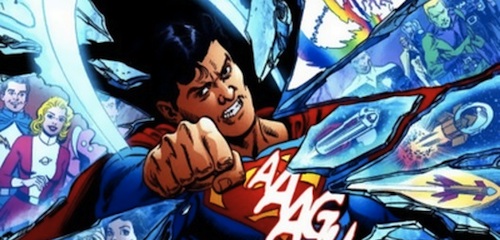Since the Top is not an especially popular character, occasionally I get asked why I like him or people seem to be incredulous that anyone could. I figured it was finally time to write a short essay about it. This isn’t necessarily intended to change other people’s minds about him; of course he has a ton of flaws and I’m well aware he’s not particularly appealing to most people. It’s just an explanation of what I like about him.
I first developed an interest when reading some short biography, which stated to the effect “He taught himself to spin at high speeds, and the spinning increased his intelligence”. Frankly, I was delighted by the sublime ridiculousness of it, and can’t understand why some people consider that aspect of his origin to be a negative thing. I enjoy at least a bit of silliness and light-heartedness in superhero comics, a genre that by definition has some inherent goofiness.
I admire that he’s very much self-made. He taught himself about tops and the physics of rotation, taught himself how to spin, and built all of his own wide-ranging inventions. His genius intellect and psionic powers were unexpected gifts, but also the result of his own achievement (spinning). His repeated escapes from Hell and returns from the dead seem to have been the result of his own cleverness and stubbornness; he decided he wanted to come back, so he went and did it. He has a hell of an ego, but you can see why. Continue reading

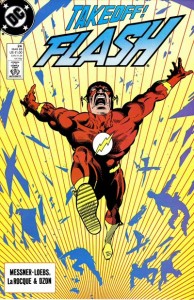 I hope today’s
I hope today’s 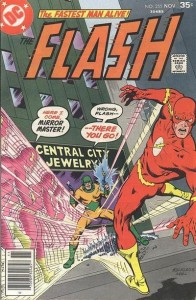 With any luck, digital releases will also be the way we’ll finally get the Bronze Age and the Golden Age re-released. I’ve
With any luck, digital releases will also be the way we’ll finally get the Bronze Age and the Golden Age re-released. I’ve 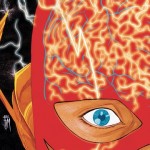 A while back I examined my comic book buying patterns by deciding which books I would buy
A while back I examined my comic book buying patterns by deciding which books I would buy 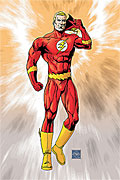 With the New 52, DC Comics is making a point to get all their comics released on time. In recent years, scheduling
With the New 52, DC Comics is making a point to get all their comics released on time. In recent years, scheduling 